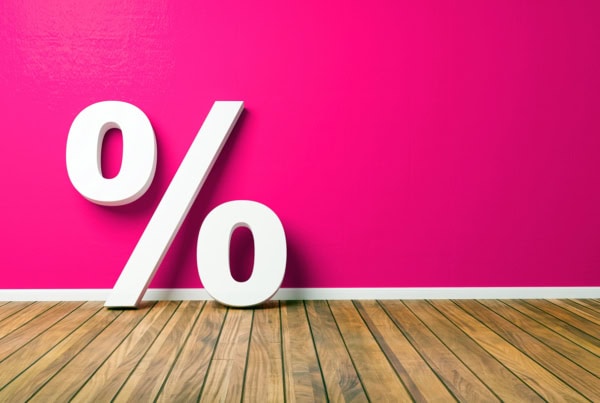“Stocks go up” isn’t the only way to get ahead in the market, which is fortunate, because stocks don’t always go up.
A focus on dividend stocks can help you generate another type of return by sharing directly in the profits of a company via regular payouts to your investment account. These dividends are great to have in good times when stocks are heading higher … but even better to have as a source of returns when stocks are up against the ropes.
Importantly, you don’t necessarily have to pick individual winners—you can buy diversified bundles of these stocks via dividend exchange-traded funds (ETFs).
Today, I’m going to help you dive into the best dividend ETFs for 2025. I’ll give you a quick primer on dividend stocks, discuss why you might want to buy dividend funds to get exposure to these stocks, and list what I believe are some of the best dividend ETFs you can buy for the coming year.
Disclaimer: This article does not constitute individualized investment advice. These funds appear for your consideration and not as personalized investment recommendations. Act at your own discretion.
Featured Financial Products
What Is a Dividend Stock?
A dividend is a cash payment from a company to shareholders. Companies that regularly provide these cash payments are referred to as dividend stocks.
Often, investors favor dividend stocks because, to regularly pay out those dividends, they have to generate consistent and significant profits—a good sign that the company is financially healthy and well-managed.
Why Invest in Dividend Stocks via ETFs?
![The 8 Best Dividend ETFs [Get Income + Diversify] 2 cash counting money](https://youngandtheinvested.com/wp-content/uploads/cash-counting-money.jpg)
As a group, dividend stocks are pretty common, but they’re not created equally. Some companies only pay nominal dividends that are just a penny or two per share, with no prospect for dividend growth anytime soon. Others may offer generous but unsustainable dividend payouts that might be eliminated altogether in the future.
That’s why exchange-traded funds are a good alternative to individual dividend stocks. ETFs spread your money around, rather than force you to rely on one company’s specific strengths and weaknesses.
And finding the best stocks capable of consistently paying dividends and enjoying significant future dividend growth can be a daunting task, even for seasoned investors. So instead, why not try to gain exposure to dividend-paying stocks via a single, diversified holding that’s tasked with finding great companies for you?
That’s what the best dividend ETFs have to offer.
A Note About Dividend Yields
A term you’re going to want to familiarize yourself with is dividend yield.
A dividend yield tells you how much of your investment you can expect to get back in the form of dividends. A stock’s dividend yield, for instance, is calculated on an annualized basis, and expressed as a percentage of share price. Example: If a stock trades for $100 and pays 50¢ per quarter, that’s $2.00 in annual payouts—or 2.0% of the share price. So its dividend yield is 2.0%. Pretty easy.
But a fund’s dividend yield is calculated a little differently. It’s much more difficult to estimate future payouts for an ETF or mutual fund because they own groups of many different stocks paying on changing cycles.
The fairest way to measure yield in dividend ETFs and mutual funds is to calculate the distributions over the last calendar year. Dividends might change for these funds going forward, but a trailing 12-month look is the most faithful way to calculate yield.
Related: 10 Best Stock Advisor Websites & Services to Seize Alpha
Our Favorite Dividend ETFs
Like with any investment, what constitutes the best ETFs for the yield-minded depends on the individual’s personal goals. There are many ways to invest for dividend income; the following list of options should provide something that fits in most portfolios.
Our best dividend ETFs are listed by yield, from smallest to largest.
Best Dividend ETF #1: Vanguard Dividend Appreciation ETF
![The 8 Best Dividend ETFs [Get Income + Diversify] 3 a hundred dollar bill growing in a planting pot.](https://youngandtheinvested.com/wp-content/uploads/dividend-growth-potted-dollar-640.jpg)
- Assets under management: $86.3 billion
- Dividend yield: 1.9%
- Expense ratio: 0.05%, or 50¢ per year on every $1,000 invested
The first few ETFs that I’ll highlight today belong on any evergreen list of the best dividend ETFs, but their importance in 2025 is even greater given the current economic situation.
The markets have been on a roller-coaster ride for months thanks to scattershot policy rollouts. If the “Liberation Day” tariffs end up holding (and that’s an open question), some Wall Street strategists believe our chances for recession will grow. If so, it’s hard to like any companies better than serial dividend growers, whose ability to regularly improve their cash distributions over the course of many years is a testament to their financial durability.
A search for companies in this vein starts with the Vanguard Dividend Appreciation ETF (VIG). It’s the largest dividend ETF by assets, and it’s one of the cheapest dividend funds, too. But unlike most dividend ETFs where dividend yield is the point, VIG focuses on dividend growth—which not only delivers more cash to shareholders’ accounts, but is also considered a sign of corporate-financial quality.
This Vanguard index fund is benchmarked to the S&P U.S. Dividend Growers Index, which holds stocks that have consistently improved their payouts every year for at least 10 consecutive years. (Interestingly, the index excludes the 25% highest-yielding companies that would be eligible to be in the index.)
Currently, VIG holds roughly 340 top dividend stocks in the U.S., led by tech giants Apple (AAPL) and Broadcom (AVGO), mega-bank JPMorgan Chase (JPM), and integrated energy major Exxon Mobil (XOM). It’s also weighted by size, which means the bigger the stock, the more influence it has on the portfolio. Those four companies I just mentioned? They represent 16% of the portfolio!
The upside? These are very stable, decent-paying stocks. The downside? The ETF’s yield, while a little bit higher than the S&P 500, isn’t as generous as many of the other dividend ETFs on this list.
Want to learn more about VIG? Check out the Vanguard provider site.
Related: 15 Best Stock Research & Analysis Apps, Tools and Sites
Best Dividend ETF #2: iShares Core Dividend Growth ETF
![The 8 Best Dividend ETFs [Get Income + Diversify] 4 Dividend growth pot](https://youngandtheinvested.com/wp-content/uploads/Dividend-growth-pot.jpg)
- Assets under management: $30.6 billion
- Dividend yield: 2.3%
- Expense ratio: 0.08%, or 80¢ per year on every $1,000 invested
The iShares Core Dividend Growth ETF (DGRO) is another well-established and cost-effective dividend ETF. And like VIG, it is committed to dividend growth rather than dividend yield.
To be included in DGRO, companies must pay a qualified dividend, boast at least five years of uninterrupted annual dividend growth, and have an earnings payout ratio of less than 75%. (This last number means a company can spend no more than 75% of its profits to pay its dividends.) It also has another filter similar to VIG in that, prior to screening its available universe of stocks for dividend growth and payout ratio, it excludes the top 10% of dividend yields.
Put more succinctly: DGRO tries to hold dividend growers that aren’t falling apart and stretching to afford their distributions.
About 410 stocks make the cut, with the typical mega-cap names at the top of the list. That includes tech stocks like Apple and Microsoft (MSFT) that might not have particularly generous yields right now, but that are likely to bolster their payouts in the years to come.
This ETF also doesn’t have a sky-high current dividend yield. However, investors who plan to buy and hold for many years could see the income payments grow significantly over time.
Want to learn more about DGRO? Check out the iShares provider site.
Related: 15 Best Investing Research & Stock Analysis Websites
Featured Financial Products
Best Dividend ETF #3: ProShares S&P 500 Aristocrats ETF
![The 8 Best Dividend ETFs [Get Income + Diversify] 5 royalty crown](https://youngandtheinvested.com/wp-content/uploads/royalty-crown.jpg)
- Assets under management: $11.3 billion
- Dividend yield: 2.2%
- Expense ratio: 0.35%, or $3.50 per year on every $1,000 invested
Of course, there’s dividend growth, and there’s dividend growth. The ProShares S&P 500 Aristocrats ETF (NOBL) clearly falls into the latter.
This dividend ETF invests in the S&P 500 Dividend Aristocrats, which are an elite group of stocks that have upped the ante on their payouts for at least 25 consecutive years. How long is 25 years? That covers not just COVID and the 2020s’ pair of bear markets, but also the Global Financial Crisis of 2008 … and even the dot-com boom and bust in 1999-2000!
More impressive still? NOBL holds stocks that have raised their dividends for even longer periods of time, including a number of Dividend Kings that have hit the half-century mark.
“From an evergreen standpoint, companies that consistently grow their dividends are demonstrating quality,” says Simeon Hyman, global investment strategist at ProShares. “You can’t manufacture a dividend out of thin air. These companies have to be generating consistent earnings, consistent cash flow, have appropriate levels of leverage … and that comes through in spades. If you look at the Aristocrats, you’ll see things like better return on assets (RoA) compared to the S&P 500, and a whole host of other measures.”
In other words … the kinds of companies that have already proven many times that they can survive economic and market tumult.
This Dividend Aristocrats ETF has a tight portfolio of fewer than 70 holdings. And like with other dividend ETFs that mostly focus on payout growth, NOBL doesn’t offer a very large payday. Still, if you want to prioritize stability and consistency in your dividend payments, this fund is worth a look.
Want to learn more about NOBL? Check out the ProShares provider site.
Related: 11 Best Stock Trading Apps [Free + Paid]
Best Dividend ETF #4: Utilities Select Sector SPDR Fund
![The 8 Best Dividend ETFs [Get Income + Diversify] 6 electric utility tower small](https://youngandtheinvested.com/wp-content/uploads/electric-utility-tower-small.jpg)
- Assets under management: $18.5 billion
- Dividend yield: 2.9%
- Expense ratio: 0.08%, or 80¢ per year on every $1,000 invested
If you’re more concerned about high current yield rather than dividend growth, the rest of the funds on my list will be more to your taste.
Wall Street prognosticators were widely favorable on utility stocks heading into 2025—even when they didn’t quite agree on where the market itself is going.
For instance, JPMorgan and Argus Research, which both saw double-digit gains for the S&P 500 in 2025, were favorable on the sector, with the latter noting that utes were “forecast to see more moderate earnings growth but to remain above the long-term average.” However, Stifel—a research firm that believed the market was going to slip in 2025—preferred utilities for their defensive properties and value proposition.
Amid all of this is a new growth driver for utilities: data centers and artificial intelligence. Morgan Stanley Research Analyst Dave Arcaro says “data centers are having a significant impact on the industry already” and that “powering [generative AI] will be the dominant investment theme next year.”
Regardless of reason, utilities so far have been the best performer in 2025.
The best way to get this exposure is an oldie but a goodie: the Utilities Select Sector SPDR Fund (XLU). The XLU is an index fund that holds all utility-sector stocks in the S&P 500, which includes electric, gas, and water utilities; multi-utilities; and independent power and renewable electricity producers. Right now, that’s a roughly 30-stock set of names including NextEra Energy (NEE), Southern Co. (SO), and Constellation Energy (CEG).
Naturally, if you buy a sector ETF, you run the risk of the entire fund’s portfolio struggling if the sector itself falls on hard times. But in XLU, there’s also some significant single-stock risk—the aforementioned names account for more than a quarter of XLU’s weight, including nearly 11% for NEE alone.
But you’re also receiving a bit of compensation in the form of above-average dividends. Utilities tend to be one of the highest-yielding sectors, and right now, SPDR’s utility ETF doles out more than twice the yield of the S&P 500.
Want to learn more about XLU? Check out the State Street Global Advisors provider site.
Related: The 13 Best Investment Apps for Beginners
Best Dividend ETF #5: Schwab U.S. Dividend Equity ETF
![The 8 Best Dividend ETFs [Get Income + Diversify] 7 rolled cash dollars money dividends small](https://youngandtheinvested.com/wp-content/uploads/rolled-cash-dollars-money-dividends-small.jpg)
- Assets under management: $67.3 billion
- Dividend yield: 4.0%
- Expense ratio: 0.06%, or 60¢ per year on every $1,000 invested
You might not want to put all of your chips into one sector. That’s OK—you can still get an above-average level of yield across several market sectors with high-yield dividend ETFs like the Schwab U.S. Dividend Equity ETF (SCHD).
While SCHD doesn’t explicitly target dividend growth, that doesn’t mean it’s throwing quality out the window. To be included in the fund’s tracking index, the Dow Jones U.S. Dividend 100, a company must have 10 consecutive years of dividend payments, have a float-adjusted market capitalization of at least $500 million, and meet minimum liquidity criteria. The index then selects stocks based on four metrics:
- Cash flow to total debt
- Return on equity
- Dividend yield
- Five-year growth rate
SCHD implements a few other controls to prevent excessive single-stock and even single-sector risk, including a modified market-cap weighting, a 4% weighting cap on individual stocks, and a 25% weighting cap on sectors. The index rebalanced quarterly to keep those portfolio caps tight, and its holdings are reviewed once a year.
The result is a basket of roughly 100 large-caps with pretty decent yields, including the likes of Coca-Cola (KO), Verizon (VZ), and Altria (MO). At the moment, the portfolio is heaviest in energy (21%), consumer staples (19%), and health care (16%)—historically dividend-friendly sectors.
Costs are about as low as you could want, too, at just 0.06%, making SCHD one of the cheapest high-dividend ETFs on offer.
Want to learn more about SCHD? Check out the Schwab provider site.
Related: 15 Best High-Yield Investments [Safe Options Right Now]
Best Dividend ETF #6: Vanguard Real Estate ETF
![The 8 Best Dividend ETFs [Get Income + Diversify] 8 commercial real estate property buildings](https://youngandtheinvested.com/wp-content/uploads/commercial-real-estate-property-buildings.jpeg)
- Assets under management: $33.2 billion
- Dividend yield: 4.1%
- Expense ratio: 0.13%, or $1.30 per year on every $1,000 invested
One of the best income-producing corners of the markets is real estate, and to tap the potential of properties, we’ll want one of the most popular Vanguard ETFs: the Vanguard Real Estate ETF (VNQ).
As the name implies, this dividend ETF is focused solely on real estate investment trusts (REITs) and related investments. So, the companies in this fund own all sorts of real estate—from office buildings and apartments to hotels and even driving ranges. Currently, top holdings include industrial property and warehouse owner Prologis (PLD), telecom infrastructure company American Tower (AMT), and health care-focused Welltower (WELL). (However, if you check out the provider site, you’ll see that VNQ’s largest allocation is to the Institutional Plus shares of the Vanguard Real Estate II Index Fund, which is itself a basket of REITs that’s extremely similar to VNQ.)
REITs are required to pay out at least 90% of their profits to shareholders, which they do in exchange for favorable tax treatment. As a result, real estate tends to be one of the highest-yielding sectors; VNQ’s 4%-plus yield is more than triple that of the S&P 500.
And like with XLU, keep in mind that while this dividend ETF is highly diversified, at about 160 REITs, these businesses are in many ways interrelated. That means putting your money into this fund exposes you to any volatility from the real estate industry.
Want to learn more about VNQ? Check out the Vanguard provider site.
Related: 7 Best Banks for Real Estate Investors + Landlords
Best Dividend ETF #7: iShares International Select Dividend ETF
![The 8 Best Dividend ETFs [Get Income + Diversify] 9 international currency money small](https://youngandtheinvested.com/wp-content/uploads/international-currency-money-small.jpg)
- Assets under management: $5.0 billion
- Dividend yield: 5.3%
- Expense ratio: 0.49%, or $4.90 per year on every $1,000 invested
Right now, if you want a yield of 4% or more, it’s difficult to find that in dividend ETFs without looking overseas. Indeed, most of the highest-yielding equity ETFs are either international or global (U.S. plus international).
International dividend stocks are a slightly different animal. They often pay less frequently than U.S. dividend stocks—maybe once or twice a year instead of each quarter. Their payouts typically fluctuate more based on seasonal profitability of the companies as well as currency exchange rates. They’re taxed differently, too. But as you can see by the yield of the iShares International Select Dividend ETF (IDV), international stocks tend to be more generous as a group.
This roughly 100-stock dividend ETF’s portfolio includes the world’s largest and most established firms. This includes $130 billion French utility giant TotalEnergies (TTE) and $100 billion consumer company British American Tobacco (BTI). The U.K. is the most heavily weighted country at more than 20% of assets, though Italy, France, Spain and Germany are among other countries with prominent weightings in this ETF.
And a bonus for IDV shareholders in 2025: While U.S. stocks have struggled, international developed markets have enjoyed an updraft.
If you yearn for higher yield and want to diversify your portfolio to include international stocks, IDV does the trick.
Want to learn more about IDV? Check out the iShares provider site.
Related: The Best Closed-End Funds (CEFs)
Best Dividend ETF #8: Global X SuperDividend ETF
![The 8 Best Dividend ETFs [Get Income + Diversify] 10 super dividends cash money small](https://youngandtheinvested.com/wp-content/uploads/super-dividends-cash-money-small.jpg)
- Assets under management: $801.4 million
- Dividend yield: 11.1%
- Expense ratio: 0.58%, or $5.80 per year on every $1,000 invested
“No no,” you say. “Where are the really high yields?”
OK. You asked for it.
The Global X SuperDividend ETF (SDIV) prioritizes yield above all else, generating a current payout of 11% that’s literally nine times that of the S&P 500, and well more than double the 10-year Treasury yield.
Global X’s fund definitely does not look like most other dividend ETFs.
This is a global fund made up of roughly 100 of the world’s highest-yielding securities. But unlike many global funds, which tend to weight the U.S. at 50% or more, America accounts for about 30% of assets. Other countries fill that vacuum, including Hong Kong (13%), Brazil (8%), and the U.K. (6%). Also, SDIV is extremely tilted toward just a handful of sectors—financials (27%), energy (23%), materials (13%), and real estate (13%) make up 76% of the fund!
I hope it goes without saying that the much higher rewards come with much higher risk. SDIV really is all about high dividend yield—but quality simply isn’t as important. The index’s only real quality check is a periodic review for dividend stability (Global X gives this example: “no official announcement as of the Selection Day that dividend payments will be canceled or significantly reduced in the future.”)
In other words: SDIV is good for aggressive investors who want high income. But people looking for stability might want to search elsewhere.
Want to learn more about SDIV? Check out the Global X provider site.
Related: 10 Best Stock Picking Services, Subscriptions, Advisors & Sites
Featured Financial Products
Learn More About These and Other Funds With Morningstar Investor
If you’re buying a fund you plan on holding for years (if not forever), you want to know you’re making the right selection. And Morningstar Investor can help you do that.
Morningstar Investor provides a wealth of information and comparable data points about mutual funds and ETFs—fees, risk, portfolio composition, performance, distributions, and more. Morningstar experts also provide detailed explanations and analysis of many of the funds the site covers.
With Morningstar Investor, you’ll enjoy a wealth of features, including Morningstar Portfolio X-Ray®, stock and fund watchlists, news and commentary, screeners, and more. And you can try it before you buy it. Right now, Morningstar Investor is offering a free seven-day trial. You can check out the current deal, as well as discounted rates for students and teachers, in our details box below.
- Morningstar Investor offers expert research, investing analysis, and advisor-grade portfolio management tools that are tailor-made for buy-and-hold investors.
- Morningstar is one of the most prized sources of mutual fund and exchange-traded fund (ETF) data in the world.
- How does your portfolio stack up? Put it through Morningstar's Portfolio X-Ray, which will provide insights such as whether you have too many overlapping holdings or whether you're paying too much in fees.
- Special Offer 1: Click our sign-up link to receive $50 off your first year of Morningstar Investor. (Annual plan only.)
- Special Offer 2: Students receive one year of Morningstar Investor access for just $25!
- Special Offer 3: Teachers receive a 60% discount on Morningstar Investor access.
- Top-flight fund research and analysis
- Portfolio management tool
- Powerful screener
- Watchlists
- Tailored news and commentary
- Below-average charting
- High monthly billing rate
Frequently Asked Questions (FAQs)
![The 8 Best Dividend ETFs [Get Income + Diversify] 13 question and answer faq](https://youngandtheinvested.com/wp-content/uploads/question-and-answer-faq.jpg)
How do dividend ETFs pay investors?
When you own an ETF, you own parts of shares of various dividend stocks with different payout schedules. However, you don’t get paid when those stocks pay out—you get paid based on the ETF’s payout schedule.
Dividend ETFs pay their investors the same way as dividend stocks do, with deposits appearing on your brokerage statement on a regular cycle. Some funds—like the Global X SuperDividend ETF (SDIV)—pay you on a monthly cycle. But the majority, including the other six dividend ETFs on this list, all pay on a quarterly schedule, which is similar to most U.S. dividend stocks.
Want to talk more about your financial goals or concerns? Our services include comprehensive financial planning, investment management, estate planning, taxes, and more! Schedule a call with Riley to discuss what you need, and what we can do for you.
Related:




![The 8 Best Dividend ETFs [Get Income + Diversify] 1 best dividend etfs 2025](https://youngandtheinvested.com/wp-content/uploads/best-dividend-etfs-2025-yati-584x389.jpg)
![The 8 Best Dividend ETFs [Get Income + Diversify] 11 morningstar investor signup 1](https://youngandtheinvested.com/wp-content/uploads/morningstar-investor-signup-1.png)
![The 8 Best Dividend ETFs [Get Income + Diversify] 12 Morningstar Investor](https://youngandtheinvested.com/wp-content/uploads/morningstar-logo-color.png)
![The 8 Best Dividend ETFs [Get Income + Diversify] 14 Riley Adams, CPA](https://youngandtheinvested.com/wp-content/uploads/rileythinborder.png)



